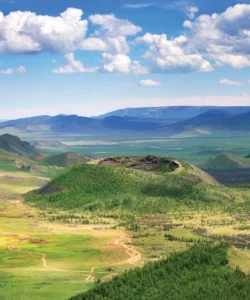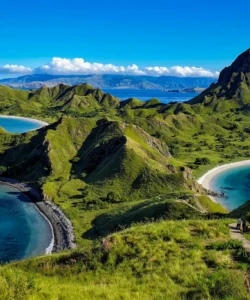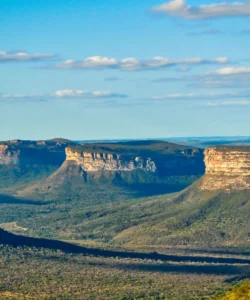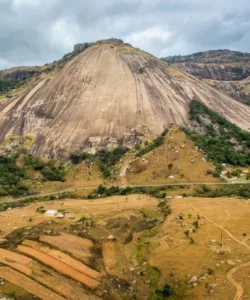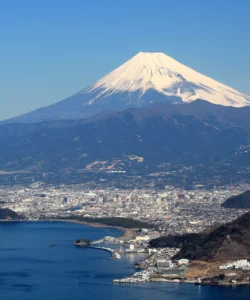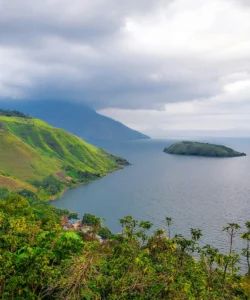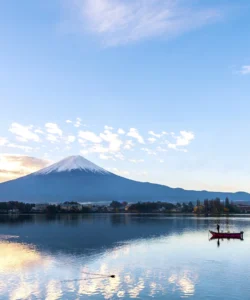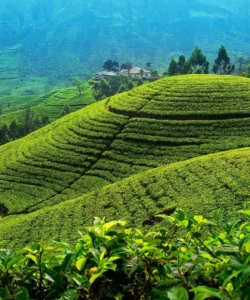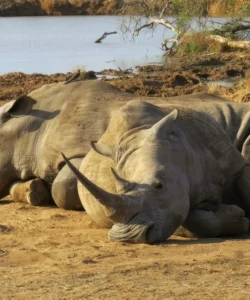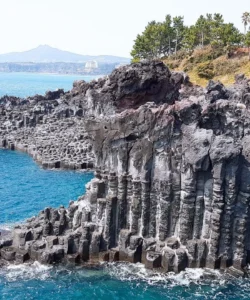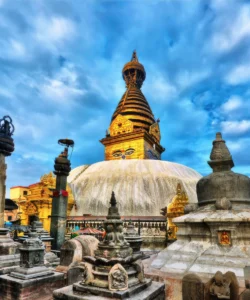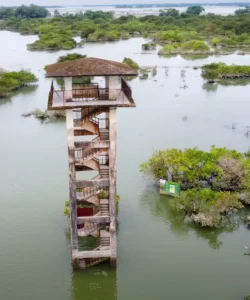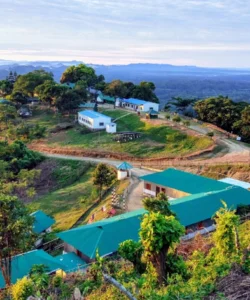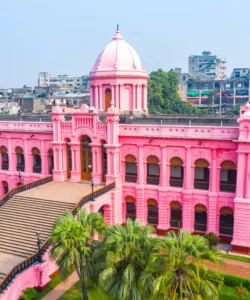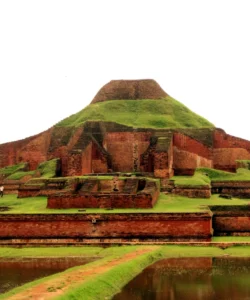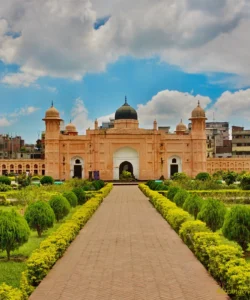The Deosai Plains, often referred to as the “Land of Giants” or the “Roof of the Earth,” are a breathtaking natural wonder located in the Gilgit-Baltistan region of Pakistan. This vast, treeless alpine plateau is renowned for its immense scale, stunning wildflowers, and unique wildlife, particularly the endangered Himalayan Brown Bear. It’s a place of profound solitude and pristine beauty, existing at an exceptionally high altitude.
Name: Deosai Plains (Urdu: دیوسائی میدان, meaning “Land of Giants” or “Shadow of the Giant.” In Balti, it’s called Ghbiarsa, meaning “Summer’s Place”). Officially designated as Deosai National Park.
Address: The Deosai National Park is situated in the Gilgit-Baltistan region of Pakistan, lying primarily between the Skardu District and the Astore District. It is about 30 km (18.6 miles) southeast of Skardu city.
How to Get There:
Access to the Deosai Plains is limited to a short summer window and primarily involves reaching Skardu or Astore, then taking a 4×4 vehicle.
- By Air to Skardu (SKDU): This is the most common way for international travelers. Skardu Airport has direct flights from Islamabad, Pakistan’s capital. Flights are highly weather-dependent. From Skardu Airport, you’ll need to hire a 4×4 jeep to Deosai.
- By Road to Skardu or Astore:
- From Islamabad/Rawalpindi: You can drive the Karakoram Highway (KKH) to Skardu (a long journey, often two days). Or, you can take a more direct route to Astore (around 13 hours).
- From Skardu to Deosai: This route is approximately 30 km and is considered the more adventurous, rough off-road track, taking about 1.5-2 hours. You’ll pass through Sadpara Lake. A 4×4 jeep is highly recommended, if not mandatory, for this route.
- From Astore to Deosai: This route is about 40 km and is generally smoother, often a paved highway for a significant portion, taking about 1.5 hours. It passes through picturesque Chilam Village.
- Within the Park: The park has well-defined tracks for jeeps. For exploring specific areas like Sheosar Lake, Bara Pani, or Kala Pani, visitors can opt for short hikes. Camping is a popular activity within designated areas.
- Permits: An entry ticket for Deosai National Park is required for all visitors. This can usually be purchased at the entry gates (Sadpara checkpost from Skardu side, or Chilam checkpost from Astore side).
- Best Time to Visit: Deosai Plains are only accessible from June to September due to heavy snowfall.
- Mid-June to Mid-July: The plains are often still partially snow-covered, but wildflowers begin to bloom, creating a unique contrast.
- Late July to August: This is the peak blooming season, with vast meadows carpeted in a kaleidoscope of wildflowers. The weather is generally pleasant, but afternoon showers or even summer snowfall can occur.
- September: The wildflowers start to fade, but the plains turn golden-brown, offering a different kind of beauty, and wildlife sightings (especially bears) might be more frequent as they prepare for hibernation.
Landscape and Architecture:
The “architecture” of the Deosai Plains is entirely natural, a result of its unique high-altitude plateau formation and glacial activity. There are no man-made structures within the park beyond basic ranger posts and campsites.
- High-Altitude Alpine Plateau: Deosai is the second-highest alpine plateau in the world, with an average elevation of 4,114 meters (13,497 feet) above sea level. This immense, undulating plain covers an area of about 3,584 square kilometers (1,384 sq mi).
- Vast Treeless Grasslands: The plateau is characterized by expansive, rolling grasslands, largely treeless due to the extreme altitude and harsh climate. These grasslands are a vibrant green in summer and turn golden in autumn.
- Wildflower Meadows: During its short summer season, Deosai transforms into a spectacular “flower garden”, with vast stretches of meadows blanketed in hundreds of species of colorful wildflowers, including wild thyme, gentian, pink sedum, and forget-me-nots. This natural bloom is a major draw.
- Sheosar Lake: The crown jewel of Deosai is Sheosar Lake, a stunning high-altitude lake located at an elevation of around 4,142 meters (13,589 ft). Its crystal-clear turquoise waters reflect the surrounding snow-capped peaks and the vast open plains, creating an incredibly picturesque scene. It is home to snow trout.
- Glacial Rivers and Streams: Numerous cold, fast-flowing glacial rivers and streams (like Bara Pani, Kala Pani, Shatung Nala) meander across the plains, fed by snowmelt from the surrounding mountains. These rivers are vital for the ecosystem and eventually feed into the Shigar River, a tributary of the Indus.
- Rolling Hills and Mountains: While the plains are flat and undulating, they are surrounded on all sides by majestic, snow-capped mountains of the Western Himalaya and Karakoram, providing a dramatic backdrop.
- Extreme Climate: The environment is characterized by extreme cold, low atmospheric pressure, low oxygen levels, and aridity, creating a unique high-altitude wetland ecosystem.
- No Permanent Human Habitation: The Deosai Plains are uninhabited by humans, contributing to their pristine and wild character.
What Makes It Famous:
- Second-Highest Plateau in the World: Deosai holds the distinction of being the second-highest alpine plateau on Earth (after the Tibetan Plateau), making it a significant geographical marvel.
- Habitat of the Himalayan Brown Bear: It is a vital sanctuary and the last stable refuge of the critically endangered Himalayan Brown Bear in Pakistan. The Deosai National Park was primarily established in 1993 to protect this iconic species. Visitors have a chance (though rare) to spot them, along with other unique wildlife like Himalayan marmots, Tibetan wolf, red fox, and snow leopards.
- Spectacular Wildflower Blooms: During summer, the plains burst into a riot of colorful wildflowers, creating one of the most beautiful natural floral displays in the world, attracting botanists and nature enthusiasts.
- Sheosar Lake: This stunning, crystal-clear high-altitude lake is a major highlight, renowned for its beauty and the reflections of the surrounding mountains.
- “Land of Giants” Mystique: Its name, derived from folklore about giants and mysterious tales, adds a unique mythical allure to its vast, silent, and sometimes eerie landscape.
- Pristine Wilderness and Solitude: Deosai offers an unparalleled experience of raw, untouched wilderness and profound solitude, a stark contrast to more developed tourist destinations.
- Birdwatcher’s Paradise: It is recognized as an Important Bird Area (IBA) by BirdLife International, serving as a breeding and resting ground for over 124 resident and migratory bird species, including golden eagles and Himalayan griffon vultures.
Differences from Some Other Wonders:
- High-Altitude Alpine Plateau Ecosystem: While other wonders might be mountains (Himalaya, Mount Kinabalu) or valleys (Hunza Valley, Neelum Valley), Deosai’s primary fame is its identity as a vast, flat, treeless high-altitude alpine plateau. This specific type of ecosystem, with its unique flora and fauna adaptations, is rare globally.
- Dominance of Wildflowers and Grasslands: Unlike dense forests (Jim Corbett, Taman Negara) or arid sand deserts (Rann of Kutch), Deosai is famous for its expansive, lush grasslands that transform into vibrant wildflower meadows in summer.
- Seasonal Inaccessibility (Due to Snow): Its long period of inaccessibility (about 8 months) due to heavy snowfall makes its short, accessible summer window highly anticipated and exclusive, a different characteristic than year-round destinations.
- Last Refuge for Himalayan Brown Bear: While other parks have diverse wildlife, Deosai’s specific importance as the primary and stable habitat for the critically endangered Himalayan Brown Bear gives it a unique conservation focus among wildlife destinations.
- Profound Silence: Visitors often remark on the “deafening silence” of Deosai, a unique sensory experience due to its high altitude, vastness, and lack of human population, contrasting with the bustling sounds of more active urban or natural areas.
- Lack of Man-Made Structures: The deliberate absence of permanent human settlements or significant architectural landmarks within the park emphasizes its raw, untouched wilderness, distinguishing it from historical sites or urban centers.
- Geographical Location (Between Ranges): Its location as a large plateau nestled between the Himalaya and Karakoram-Pamir highlands gives it a unique biogeographical identity, influencing its specific flora and fauna.
Deosai Plains Photos:


















